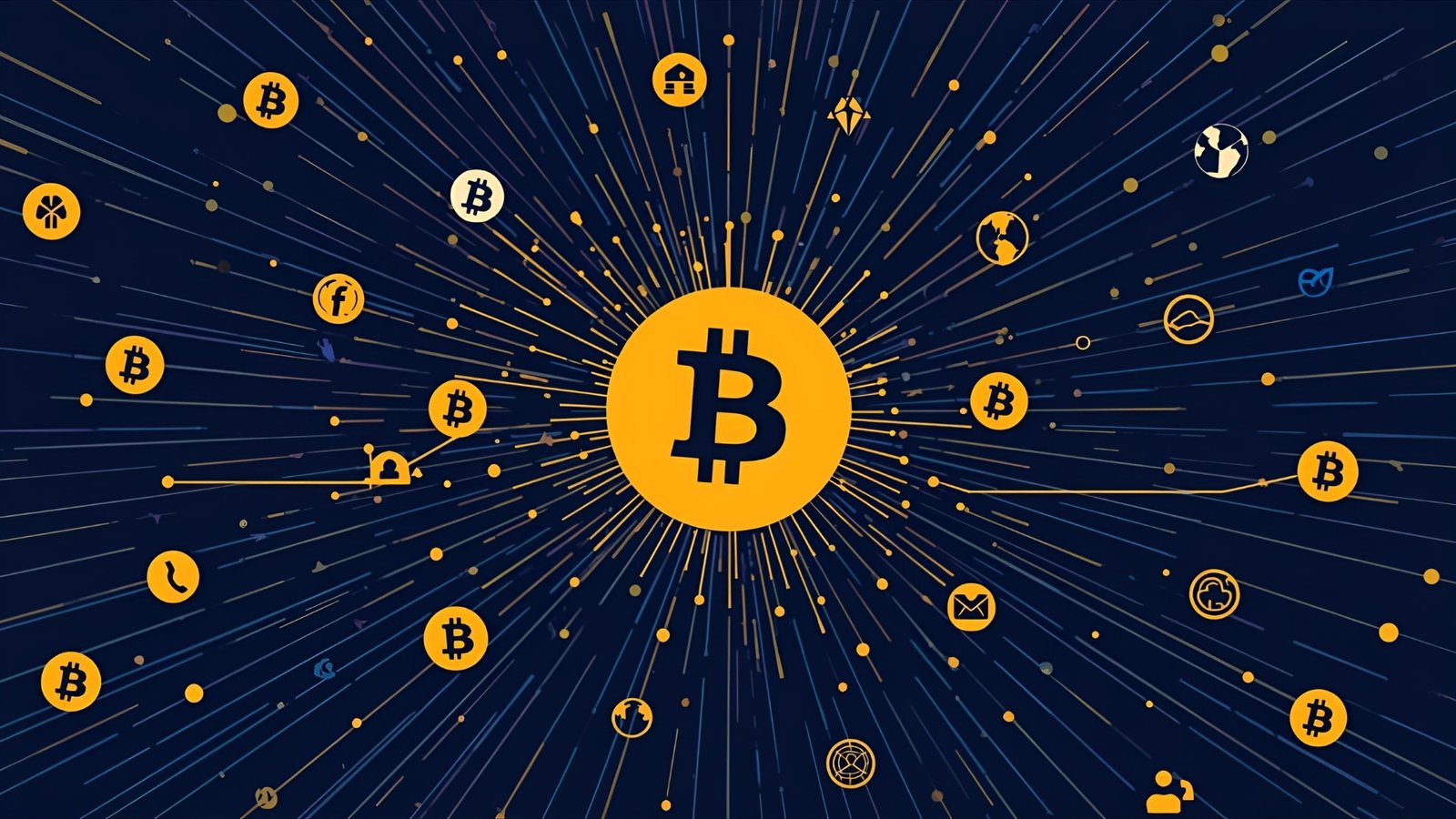If cryptocurrency feels like a black box, a blockchain explorer is the flashlight that reveals everything happening inside. It is a searchable window into a public ledger, letting you look up wallet addresses, follow transactions in real time, verify smart contracts, and even diagnose why a transfer is stuck. For newcomers, a blockchain explorer turns confusing jargon into readable, clickable data. For experienced users, it is an indispensable analytics tool for tracking portfolio movements, auditing DeFi strategies, and validating on-chain proofs.
This guide goes beyond a superficial definition. You will learn what a blockchain explorer is, how it works under the hood, and how to use it for Bitcoin, Ethereum, and other networks. You will also master practical workflows—checking confirmations, interpreting mempool status, estimating gas fees, inspecting token transfers, and reading smart contract logs. Along the way, we will highlight LSI keywords and related phrases such as block explorer, on-chain analytics, address lookup, transaction hash, EVM, UTXO, and NFT metadata so you can connect concepts quickly without getting lost in tech speak. By the end, you will navigate a blockchain explorer with the ease of a power user and the clarity of a thoughtful analyst.
What Is a Blockchain Explorer?
A blockchain explorer is a web application that reads data from a blockchain node, indexes it into a searchable database, and presents it in a human-friendly interface. Think of it as a hybrid between a search engine and a live dashboard for the ledger. You can paste a wallet address, a transaction hash (TxID), or a block number into the search bar and immediately see details like timestamp, value, status, confirmations, sender, recipient, fees, and related events.
Most networks have specialized explorers. Bitcoin users often rely on tools that focus on UTXO sets and SegWit data. Ethereum users tend to prefer explorers that decode EVM-based smart contracts, token balances, and NFT transfers. Multichain explorers aggregate multiple networks so you can jump from one chain to another without changing tools.
How a Blockchain Explorer Works Under the Hood
At its core, a blockchain explorer connects to one or more full nodes to ingest blocks and transactions. The explorer software continuously listens for new block headers, validates them, and parses transactions into structured records. It then stores that data in a database optimized for queries such as:
-
Find all transactions involving a specific address.
-
Retrieve the contents of a particular block.
-
Decode logs emitted by a contract call.
Although interfaces differ, the data pipeline is similar. A node syncs blocks and verifies them according to the consensus rules. An indexing layer extracts the fields you care about—addresses, inputs and outputs, event logs, opcodes, gas usage, and token transfers—and writes them to fast storage. The front end renders those records with filters, charts, and cross-links so you can explore without writing code. In more advanced explorers, APIs expose endpoints for developers to build dashboards, bots, and on-chain analytics.
Key Concepts You’ll See in Any Blockchain Explorer

When you open a blockchain explorer, you encounter several foundational elements. Understanding these removes most of the mystery.
Blocks and Block Height
The ledger is stored in blocks, each referencing the previous block’s hash. The block height is the block’s position in the chain. Explorers show height, timestamp, miner/validator, size or gas used, and the number of transactions. Clicking a block reveals all included transactions, which you can open individually.
Transaction Hash and Status
Every transaction is identified by a transaction hash—a fingerprint generated by hashing the transaction data. A blockchain explorer labels the status as pending, successful, or failed. Pending transactions appear in the mempool, a holding area before inclusion in a block. Success means it was mined or validated; failure can occur due to insufficient gas, reverts in a contract, or double-spend conflicts on UTXO chains.
Addresses and Balance History
Wallets and contracts have addresses. An address lookup reveals current balances, token holdings, historical transfers, and sometimes portfolio charts. On UTXO chains, the explorer lists unspent outputs; on account-based chains like Ethereum, it shows nonce, ETH balance, and ERC-20/721 data. Because blockchains are pseudonymous, an address rarely has a name unless the explorer has a verified label for an exchange, bridge, or known contract.
Fees, Gas, and Priority
Every transaction pays a fee. On Ethereum-like chains, that fee consists of a base fee plus a priority tip. Explorers visualize average and percentile gas prices and often estimate how quickly your transaction will confirm at a given gas level. On Bitcoin, you will see sat/vByte recommendations and mempool backlog charts.
Smart Contracts, ABIs, and Logs
A sophisticated blockchain explorer can display smart contract code and ABI (Application Binary Interface) data when verified by the creator. That makes it possible to read state variables and decode events like token transfers and swaps. Without a verified ABI, calls appear as hexadecimal data. With the ABI, you see human-readable function names and arguments, a huge upgrade for debugging.
Using a Blockchain Explorer Step by Step
The easiest way to learn is by doing. Here is how typical tasks unfold, whether you use a Bitcoin or Ethereum explorer, or a multichain tool.
Verify That a Payment Arrived
You receive a transaction hash from a sender. Paste it into the blockchain explorer. The page will show the number of confirmations. Many merchants treat three to six confirmations as final on Bitcoin, while a few confirmations on Ethereum are often enough for smaller transfers. If the status is pending, check the mempool size and average fees to estimate confirmation time. If the fee is too low, you may need to use Replace-By-Fee (on Bitcoin) or speed up options through your wallet (on Ethereum).
Trace Where Funds Came From
For compliance and due diligence, you may want to follow the transaction graph. By clicking on inputs and outputs (UTXO) or sender/recipient addresses (account model), you can trace funds a few hops back to an exchange, a bridge, or a DeFi protocol. While a blockchain explorer does not deanonymize users, it reveals flows and patterns that can raise red flags or confirm legitimate sources.
Inspect a Stuck Transaction
If a transaction remains pending, open it and inspect the fee or gas parameters. In Ethereum, check the maxFeePerGas and maxPriorityFeePerGas relative to current base fee. In Bitcoin, compare the sat/vByte you used with current mempool congestion. Some explorers show real-time mempool charts and suggested fee bands so you can cancel and resend with a higher value.
Read a Smart Contract Interaction
Suppose you swapped tokens on a DEX and want to confirm execution. Search your address on the blockchain explorer, find the swap transaction, and open the decoded call. You will see the contract address, the method used, the tokens involved, the exact amounts, and the event logs emitted during execution. If the DEX contract is verified, the explorer renders the call stack and even the internal transactions such as token approvals, router calls, and transfers.
Confirm NFT Mint Details
If you minted an NFT, the explorer can show token ID, owner history, and metadata URI. Verified contracts often include a read function that returns the metadata URL so you can cross-check rarity traits and images. When disputes arise, the explorer’s page becomes the trusted source of record.
Why a Blockchain Explorer Matters for Security and Transparency

The crypto ecosystem promises openness, and the blockchain explorer is how that promise becomes practical. Without it, you would have to run your own node and comb through raw blocks. With it, anyone can verify transaction finality, audit DeFi positions, and confirm whether a service is truly sending funds.
Transparency strengthens security. For example, when a project claims proof of reserves, auditors and users rely on on-chain addresses and signatures that a blockchain explorer can verify. During market stress, explorers help identify bridge congestion and liquidity drains. In bug hunts and postmortems, decoded logs reveal the exact sequence of calls, making it easier for white-hat researchers to pinpoint vulnerabilities.
Types of Blockchain Explorers You Will Encounter
Different chains require different data models and interfaces, leading to several explorer archetypes. Understanding these helps you choose the right tool and interpret results correctly.
UTXO-Oriented Explorers
Bitcoin and similar chains use the UTXO model, where each transaction consumes previous outputs and creates new ones. Explorers emphasize inputs/outputs, fees in sat/vByte, and coinbase details for miners. You will often see SegWit indicators, bech32 addresses, and tools to follow change outputs that return funds to the sender.
Account-Based Explorers
Ethereum and EVM-compatible chains use an account model. Balance and nonce are stored as state. Explorers highlight gas mechanics, contract calls, and event logs. They decode ERC-20, ERC-721, and ERC-1155 transfers and often include verified contract code with a source-map. Because EVM chains share standards, one interface can cover many networks, making multichain exploration easier.
Multichain Aggregators
Aggregators connect to many chains and abstract differences so you can switch networks via a dropdown. They are ideal for users managing diverse portfolios. While they may not expose every chain-specific detail, they provide unified address lookup, cross-chain token balances, and consolidated notifications.
Reading the Mempool and Timing Your Transaction
The mempool is a dynamic queue of pending transactions. Explorers surface mempool stats to guide timing decisions. On Ethereum, the base fee adjusts block to block. If the explorer shows a spike in demand—perhaps due to a hot NFT mint or a volatile market move—waiting a few minutes can reduce costs dramatically. On Bitcoin, weekends often bring lower demand, and explorers reveal these cyclical patterns.
A practical tactic is to check the explorer’s gas tracker or fee estimator before sending anything. If you see three suggested tiers—slow, average, fast—note the estimated confirmation time and costs. For urgent transfers, choose the fast tip; for routine payments, the average tier usually suffices. If your transaction is already pending, explorers that support replacement will display buttons or guides for fee bumping, ensuring you do not accidentally create a conflicting transaction.
Smart Contract Verification and Why It Matters
A verified contract gives you human-readable source code alongside the deployed bytecode. Most explorers support verification by having developers upload the source files and compiler settings, generating a public match with the on-chain bytecode.
For users, verification means you can audit the code, check access controls, review upgradeability patterns, and confirm that the function you are calling does exactly what it claims. For builders, verification fosters trust and reduces support tickets because users can self-diagnose with an explorer rather than waiting for answers in a forum.
Using a Blockchain Explorer for Portfolio Intelligence
Explorers go beyond raw records; many include light analytics. When you paste an address, you may see historical balance charts, net inflows and outflows, realized gains, and token distribution. By browsing on-chain behaviors, you can confirm whether a whale wallet actually holds an asset, whether a protocol is growing, or whether a bridge is experiencing unusual activity.
Power users export CSVs or use explorer APIs to build dashboards in spreadsheets and notebooks. Traders watch DEX pool addresses to track liquidity changes. NFT collectors monitor mint wallets to spot suspicious patterns. Researchers aggregate contract events to measure protocol revenue. All of this begins with the humble blockchain explorer interface and grows outward into advanced on-chain analytics.
Common Mistakes to Avoid When Using an Explorer
The clarity of an explorer can be deceptive. A few pitfalls routinely trip up newcomers.
Confusing Address Tags With Ownership
Explorers sometimes label addresses like “Exchange-Hot-Wallet-1.” That does not mean any balance in that wallet belongs to the exchange’s customers individually, nor does it prove a specific user owns part of it. Treat labels as helpful context, not definitive ownership claims.
Misreading Token Decimals
Token balances often have decimals that affect the human-readable amount. If you see a transfer of “1000000000000000000” units on an ERC-20 with 18 decimals, that equals 1 token, not one quintillion. Explorers usually render both raw and human-readable values; always verify decimals before panicking or celebrating.
Ignoring Internal Transactions
On EVM chains, many effects occur as internal transactions triggered by a contract call. If you only look at the top-level transfer, you may miss crucial steps like token approvals or router hops. Good explorers show internal traces and event logs so you can reconstruct the entire flow.
Assuming Finality Too Soon
A transaction with a single confirmation can still be reorganized on some chains. Explorers list confirmations for a reason. Follow best practices for your network—more confirmations for larger transfers, fewer for micro-payments—especially during network stress.
Privacy and Ethics: What an Explorer Can and Can’t Reveal
A blockchain explorer shows pseudonymous data. It cannot reveal names, emails, or off-chain identities unless you connect them via public disclosures. That said, pattern analysis can sometimes infer habits—sleep schedules, investment strategies, or business flows—if the same addresses repeat. Use explorers responsibly. Refrain from doxxing, and remember that privacy-enhancing tools exist for users who require stronger confidentiality.
Advanced Features for Power Users
Once you are comfortable with the basics, explorers offer features that elevate you from user to analyst.
Watchlists and Alerts
Many explorers let you tag addresses and set alerts for balance changes, large transfers, or contract events. If you are monitoring a DeFi strategy or tracking exchange wallets, these alerts can be invaluable for timing decisions and detecting anomalies.
Contract Read/Write Proxies
Verified contracts often expose read and sometimes write functions via the explorer. Reads are safe—they fetch current values without cost. Write proxies let you send transactions to call a function directly from the explorer, signing with your wallet. While convenient, this should be used with caution, as it can bypass the UX safeguards of your normal interface.
API and Webhooks
Developers can query explorer APIs for blocks, transactions, logs, and token balances. Some platforms provide webhooks that fire when a new event matches your filter. This is how market makers, wallets, and analytics firms build responsive systems on top of public data.
Also Read: Blockchain Wallet Log In Secure Access & Setup Guide
How to Choose the Right Blockchain Explorer

Selecting an explorer depends on your chain, use case, and workflow. Assess these criteria before settling on a favorite.
Network Coverage and Depth
If you operate on one chain, a chain-native explorer usually provides the deepest decoding, the richest labels, and the most accurate fee estimates. If you span many chains, a multichain explorer simplifies navigation at the cost of some depth.
Decoding Quality and Verification Support
Look for verified contracts, ABI libraries, and accurate token and NFT indexing. The more readable the interface, the faster you can debug issues. If you are a developer, ensure the explorer supports source-code verification across your languages and compiler versions.
Performance and Uptime
Explorers mirror the chain but are still web services. Downtime can happen. Choose providers with strong uptime, fast search performance, and timely indexing, especially during market volatility when you need data the most.
Privacy and Rate Limits
If you will be querying sensitive wallets at scale, consider explorers that allow private API keys, rate limit increases, or even self-hosted indexing solutions. Some open-source explorers let you run your own instance for maximum privacy.
The Future of Blockchain Explorers
As blockchains add features—modular data availability layers, rollups, account abstraction, and intent-based transactions—explorers will evolve. You can expect better support for L2 proof verification, unified views across rollups, native bridging traces, and richer visualizations of MEV and priority ordering. Explorers will also integrate more with wallets, letting you simulate transactions, detect malicious approvals, and auto-generate risk assessments before you hit “confirm.”
At the same time, user education will improve. Just as bank statements matured from raw numbers to category-tagged dashboards, explorers will surface insights rather than data dumps. Instead of hunting through logs, you will see human-readable narratives: “You swapped 2.1 ETH for 5,980 USDC via Router X, paid Y in fees, and received Z in rewards.” The foundation remains the same, though—the public ledger, queried and clarified by a powerful blockchain explorer.
Practical Walkthrough: From Zero to Insight
Imagine you just received a payment for freelance work. You want to confirm the amount, check the fees, and verify that it is final.
Search the transaction hash in your preferred blockchain explorer. The top of the page shows block number, timestamp, and confirmation count. Scroll to the fee section to see how much was paid and whether the fee aligns with typical levels for the period. Open the sender’s address to ensure the funds originated from your client’s known wallet. If the currency is a token rather than native coin, the explorer will display a token transfer event. Click through to the token contract to confirm the symbol, decimals, and total supply—this protects you from impostor tokens with confusing names.
Next, add your own address to a watchlist. Enable email or push alerts so you are notified the next time funds arrive. Export a CSV of your last month’s incoming transfers for accounting. In ten minutes, you used a blockchain explorer to validate income, reduce risk, and streamline reporting.
Troubleshooting With a Blockchain Explorer
Sometimes things go wrong. Your transaction fails with a mysterious “revert,” or an NFT mint shows success in your wallet but not in the collection.
Open the transaction and expand the error. If your explorer decodes revert reasons, you might see messages like “insufficient allowance” or “deadline exceeded.” This points you to the fix—approve more tokens or resend with a fresh deadline. If the transaction succeeded but your token is missing, check the event logs and internal transactions. The asset may have been sent to a different address due to a contract parameter. By reading the logs, you can identify the exact path and contact support with precise evidence.
For mints that hang, peek at the mempool. If gas spiked mid-mint, your transaction could be underpriced. Use your wallet’s speed-up feature, guided by the explorer’s gas tracker. If a mint sells out, the explorer proves whether your transaction made it into the block or was dropped.
Education Through Exploration
Mastery comes from curiosity. Spend time with a blockchain explorer when you are not under pressure. Look up famous addresses labeled by the explorer—exchanges, bridges, or protocol treasuries—and trace how they move assets. Read the verified code of popular contracts to learn patterns like proxy upgrades, multisig governance, and oracle updates. The more you explore, the less opaque crypto feels, and the more confident you become in using it responsibly.
Conclusion
A blockchain explorer transforms the open promise of crypto into practical transparency. It lets anyone verify payments, analyze smart contracts, trace token transfers, and understand fees without running a node or writing scripts. Whether you are a beginner confirming your first transaction or a developer shipping a DeFi protocol, the explorer is your daily companion. Learn its vocabulary—blocks, mempool, gas, logs, ABIs—and practice common workflows like address lookups and transaction decoding. With those skills, you will navigate on-chain data with confidence, make faster decisions, and protect yourself from common mistakes. In a world where trust is measured in proofs, a blockchain explorer is how you read them.
FAQs
What is a blockchain explorer in simple terms?
A blockchain explorer is a searchable website that shows you everything happening on a blockchain. You can paste an address or transaction hash and instantly see status, confirmations, amounts, and related details without needing special software.
How do I know if my transaction is confirmed?
Open the transaction in a blockchain explorer and check the confirmation count. Different networks consider different thresholds safe; a few confirmations suffice for small transfers on many chains, while large payments may require more during high network activity.
Why is my transaction pending for so long?
Your transaction is sitting in the mempool because the fee or gas was too low for current demand. Use the explorer’s fee tracker to estimate a better value, then speed up or replace the transaction from your wallet.
Can I view smart contract code and logs?
Yes. If a contract is verified, a blockchain explorer displays source code, ABI, and decoded event logs. You can read state variables, inspect function calls, and follow internal transactions to understand exactly what happened.
Are blockchain explorers private?
Explorers show pseudonymous, public data. They do not reveal real-world identities unless an address is publicly labeled. Use explorers responsibly, and remember that patterns can reveal behavior over time even when names are hidden.

